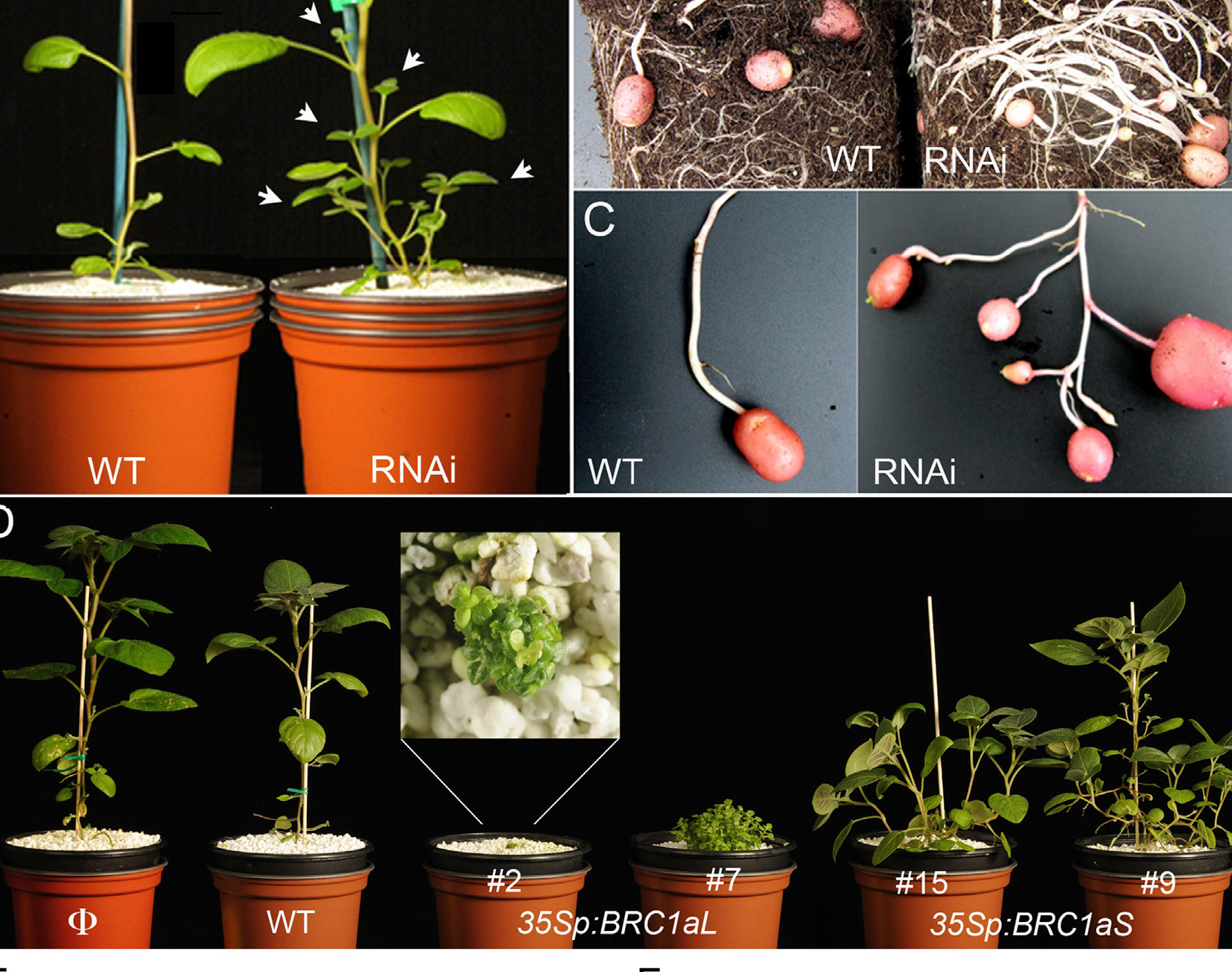Spain
July 22, 2015
Plants have various mechanisms to adapt to the environment they live in. A group of scientists from the Centro Nacional de Biotecnología (CNB) recently discovered how species of the genus Solanum control the growth of new branches depending on the presence or absence of light and on plant hormones. Two different products of the BRANCHED1a gene are responsible for this.
 Researchers at the National Centre for Biotechnology (CNB-CSIC) recently determined how potato, tomato and aubergine plants adapt to environmental characteristics by forming more or fewer ramifications on their stems. The study, published this month in Current Biology, indicates that two different BRC1a gene products that arose about 19 million years ago are responsible for this function.
Researchers at the National Centre for Biotechnology (CNB-CSIC) recently determined how potato, tomato and aubergine plants adapt to environmental characteristics by forming more or fewer ramifications on their stems. The study, published this month in Current Biology, indicates that two different BRC1a gene products that arose about 19 million years ago are responsible for this function.
Pilar Cubas, a scientist in the Plant Molecular Genetics Department of the CNB and one of the authors of the study, explains that the BRC1a gene evolved in such a way that its messenger RNA encodes two proteins with opposite functions. "The BRC1aL variant inhibits formation of new branches, while BRC1aS binds to and sequesters BRC1aL to prevent it entering the cell nucleus to do its job," explains the researcher.
When in the light, the plant produces more BRC1aS to facilitate branch formation, while in the dark, the BRC1aL form prevails and prevents the growth of new branches. Phytohormones such as auxin, or the proximity of other plants that compete to capture the red light needed for photosynthesis, also modify the proportion of the two variants and thus, the appearance of new branches.
"Environmental changes govern the proportion of these two proteins. In the case of potato, this ratio controls the number of branches and stolons (runners) - subterranean branches that give rise to the tubers. This allows them to adapt better to the environment", says Cubas.
This mechanism arose due to a small change in the DNA of the family Solanaceae 19 million years ago, after the evolutionary separation of the genera Capsicum (peppers) and Solanum (to which the tomato, potato, and aubergine belong). This change in a single DNA base has allowed the genus Solanum to adapt better and more rapidly to changes. "It is an evolutionary advantage that has given them greater success in fluctuating conditions," the author concludes.
Identifican el mecanismo con el que la planta de la patata controla la formación de ramas y estolones
Las plantas tienen diferentes mecanismos para adaptarse al ambiente donde viven. Ahora, un grupo de científicos del Centro Nacional de Biotecnología (CNB) ha descubierto cómo las especies del género Solanum modulan el crecimiento de nuevas ramificaciones en función de la presencia o ausencia de luz y hormonas vegetales. Los responsables son dos productos diferentes del gen BRANCHED1a.
Investigadores del Centro Nacional de Biotecnología (CNB) del CSIC han desvelado recientemente cómo la planta de la patata, el tomate o la berenjena se adaptan a las características ambientales formando más o menos ramificaciones en sus tallos. El estudio, publicado este mes en Current Biology, indica que los responsables son dos productos diferentes del gen BRC1a que aparecieron evolutivamente hace unos 19 millones de años.
Según explica Pilar Cubas, científica del departamento de Genética Molecular de Plantas del CNB y una de las autoras del estudio, el gen BRC1a ha evolucionado de forma que su RNA mensajero codifica dos proteínas con funciones opuestas. “La variante BRC1aL inhibe la formación de nuevas ramificaciones, mientras BRC1aS se une y secuestra a la anterior para impedir que entre al núcleo de la célula a hacer su trabajo”, explica la investigadora.
Una ventaja de la que carecen los pimientos
En presencia de luz, la planta produce más BRC1aS para facilitar la formación de ramas, mientras que en oscuridad prevalece la forma BRC1aL y se impide el crecimiento de nuevas ramificaciones. Fitohormonas como la auxina o la presencia de otras plantas, que compiten por la captura de luz roja necesaria para la fotosíntesis, también modifican la proporción de una y otra variante y, por tanto, la aparición de nuevas ramas.
“Los cambios ambientales modulan la proporción de estas dos proteínas. En el caso de la patata, esta proporción controla el número de ramas y de estolones –ramas subterráneas que dan lugar a los tubérculos–. Esto les permite adaptarse mejor al ambiente”, explica Cubas.
Este es un mecanismo que apareció por un pequeño cambio en el ADN de la familia de las Solanáceas hace 19 millones de años, después de que se separaran evolutivamente el género Capsicum (pimiento) y el Solanum, al que pertenecen el tomate, la patata y la berenjena. Este cambio de una sola base en el ADN ha permitido que el género Solanum se adapte mejor y más rápido a los cambios. “Es una ventaja evolutiva que les ha facilitado mayor éxito en ambientes con condiciones fluctuantes”, concluye la autora.
Referencia bibliográfica:
Nicolas et al., A Recently Evolved Alternative Splice Site in the BRANCHED1a Gene Controls Potato Plant Architecture, Current Biology (2015), http://dx.doi.org/10.1016/j.cub.2015.05.053